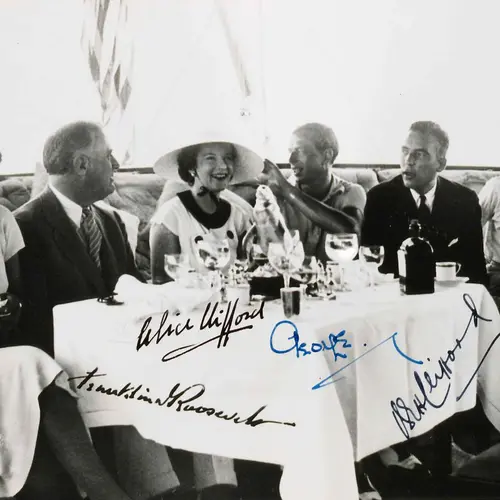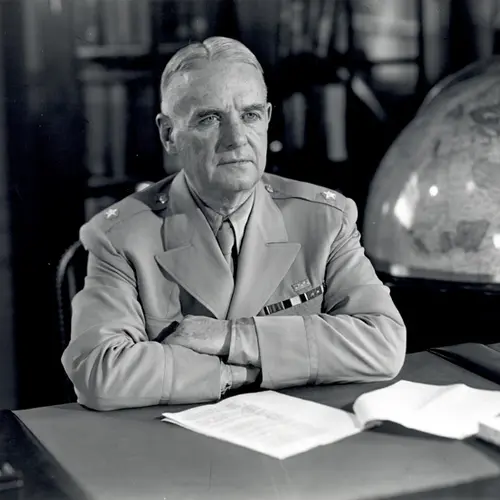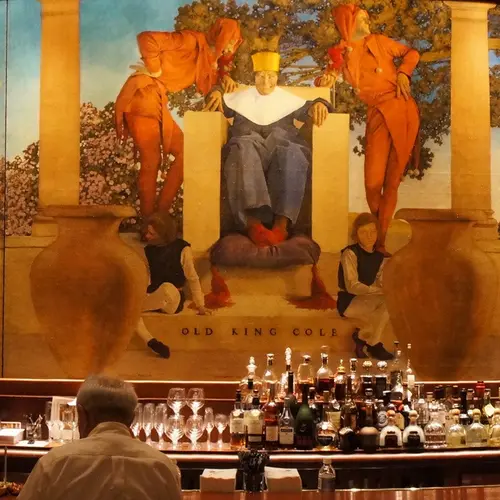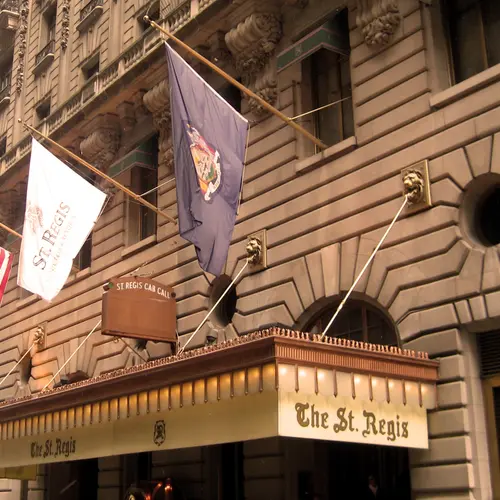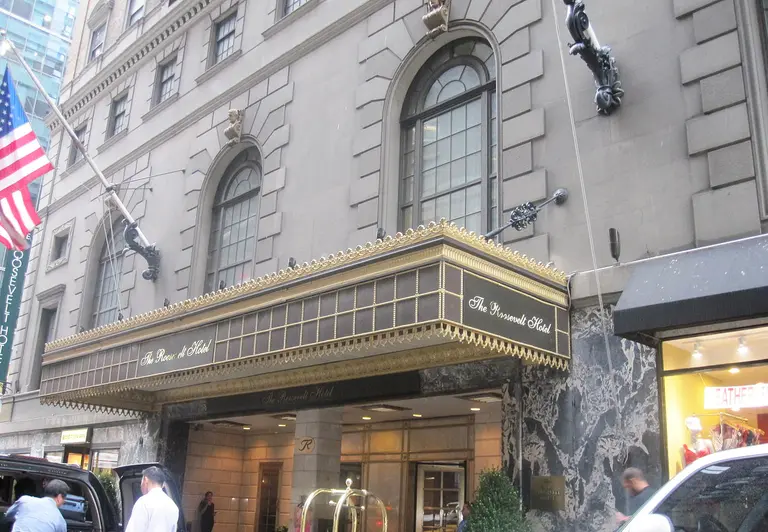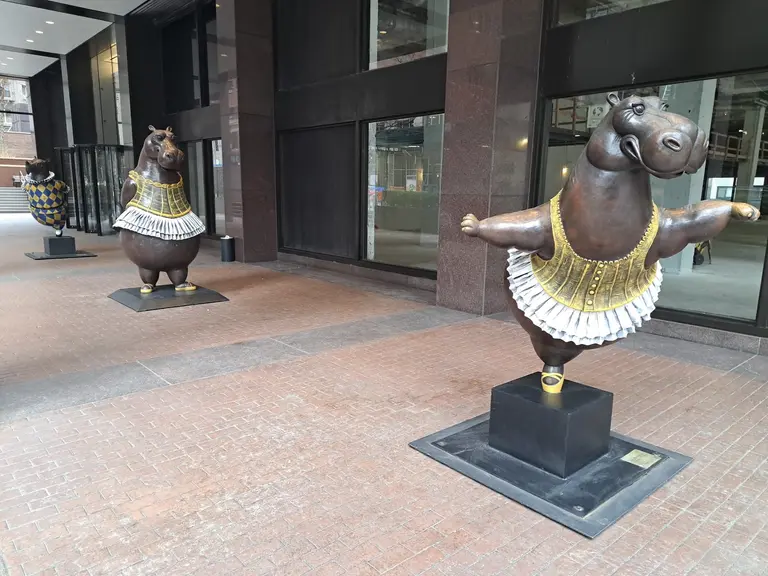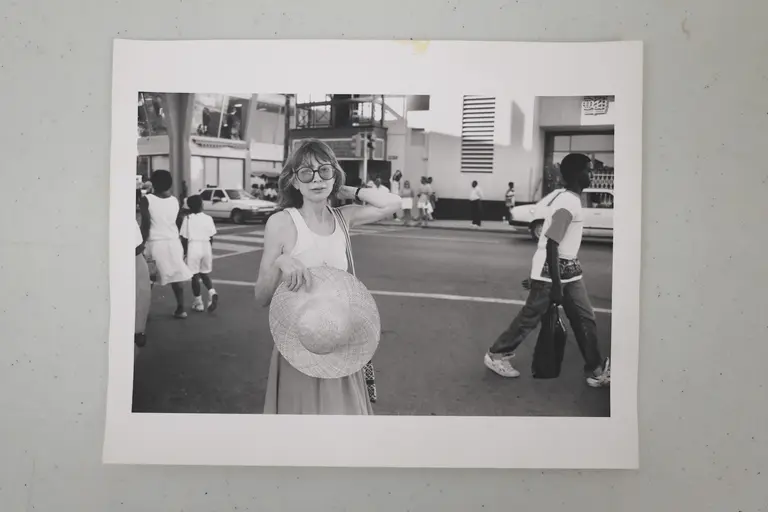Highly elegant and highly classified: The history of espionage at the St. Regis
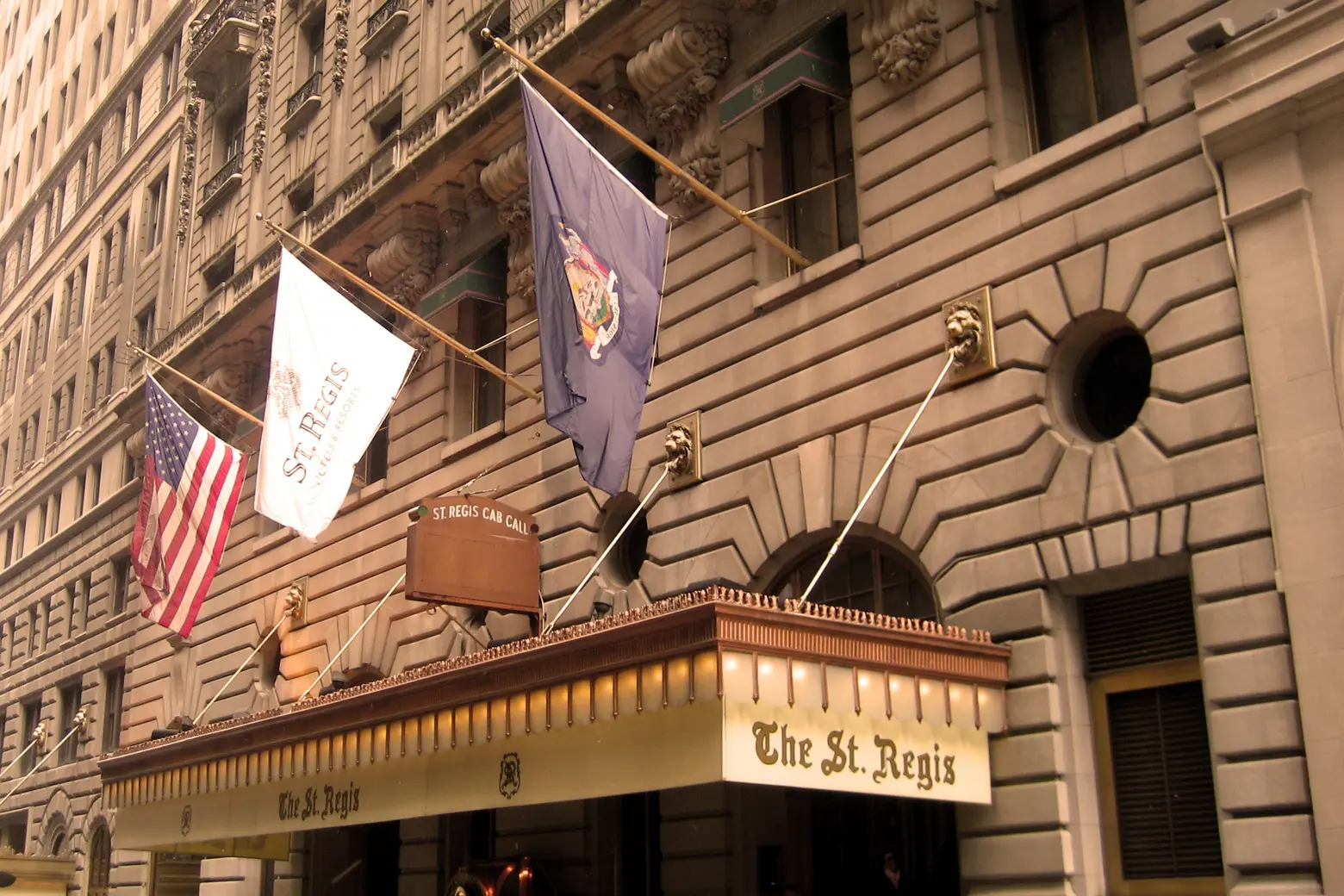
Photo via Wally Gobetz/Flickr
You know that Old King Cole had a pipe and bowl, but did you know he also had a cloak and dagger? New York’s hyper-illustrious St. Regis Hotel, home to the famous King Cole Bar, has a clandestine pedigree that goes straight to its core. Founded by a family of spies, the Hotel became headquarters for the nation’s wartime spy service, and in the process helped inspire not only the Bloody Mary cocktail but also the Invasion of North Africa.
John Jacob Astor IV built the St. Regis in 1904. Officially, the Astors were real estate tycoons, building luxury hotels throughout the city including the Astor House Hotel, the Waldorf-Astoria, the Knickerbocker Hotel and what is now the Sherry Netherland. But in addition to complimentary turndown service, the Astors had a penchant for clandestine service. When John Jacob Astor died on the Titanic, his son, Vincent, a spy, inherited his holdings, including the St. Regis.
Vincent Astor began trading in secrets as early as 1926 when he founded “The Room” in his townhouse at 34 East 62nd Street. In that clandestine club, titans of finance, captains of industry, and society swells including Kermit Roosevelt, Nelson Doubleday, David K. Bruce, and Winthrop Aldrich traded international and financial intrigue. That rarefied world provided the perfect entrée into the nation’s spy service: As a lifelong friend of Franklin Roosevelt, Astor simply made a habit of passing dispatches from The Room to the President throughout the 1930s.
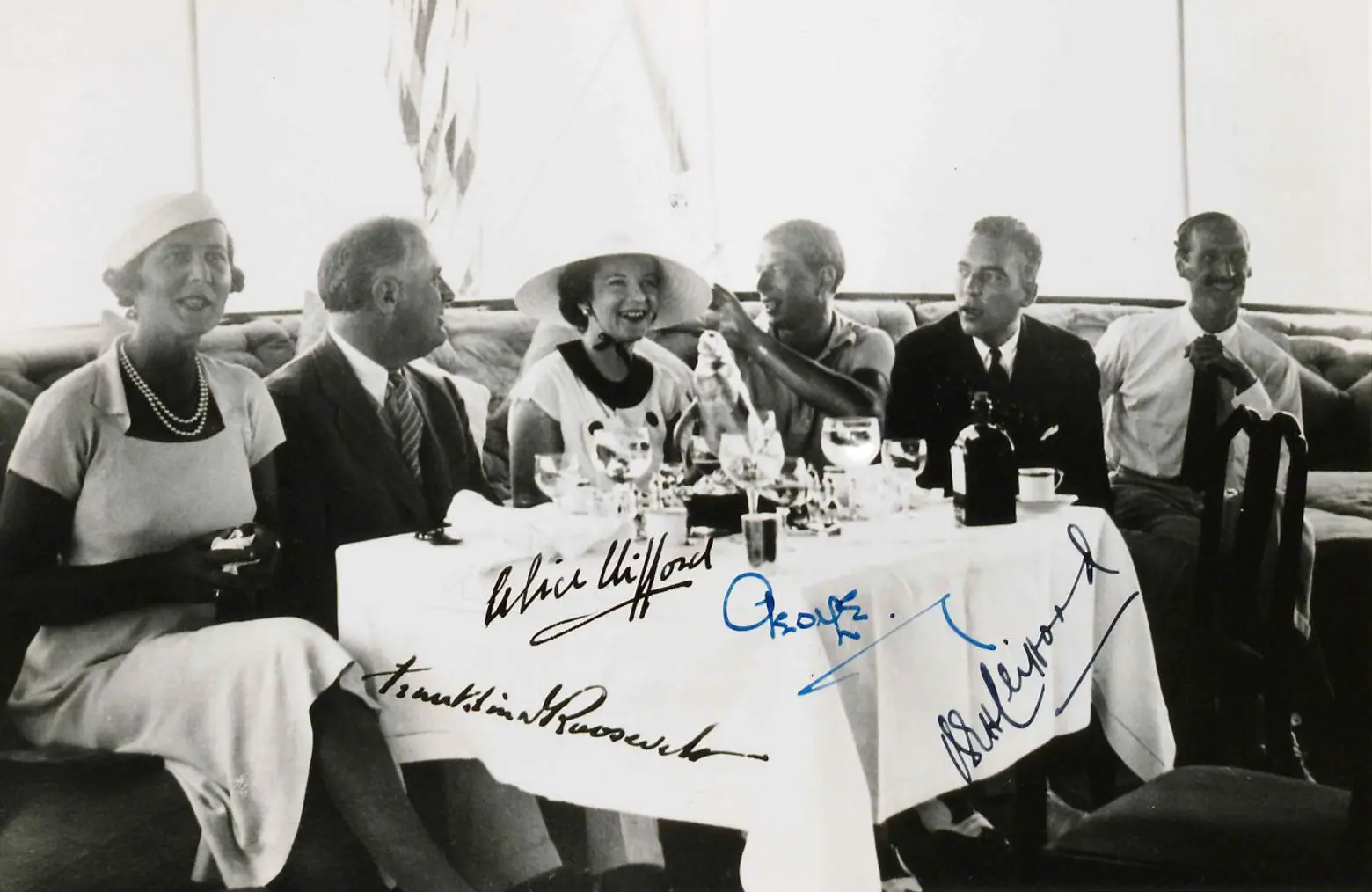 Vincent Astor and FDR entertain the Duke and Dutchess of Kent, Lord and Lady Clifford of the Bahamas. April 1935, Nassau, Bahamas. Photo courtesy of Franklin D. Roosevelt Presidential Library and Museum/Forward with Roosevelt
Vincent Astor and FDR entertain the Duke and Dutchess of Kent, Lord and Lady Clifford of the Bahamas. April 1935, Nassau, Bahamas. Photo courtesy of Franklin D. Roosevelt Presidential Library and Museum/Forward with Roosevelt
By 1938, Roosevelt trusted Astor’s eye for intel to such a degree that the President asked his friend to take a yacht cruise around the Pacific and report on Japanese military, naval and air force installations in the Marshall Islands. As the Nazi grip on Europe tightened, Astor was drawn even more deeply into clandestine affairs. In 1941, Roosevelt went so far as to have him commissioned as a commander in the US Navy, and appointed him coordinator of all intelligence operations undertaken by the FBI, the Military and the State Department in the New York Area.
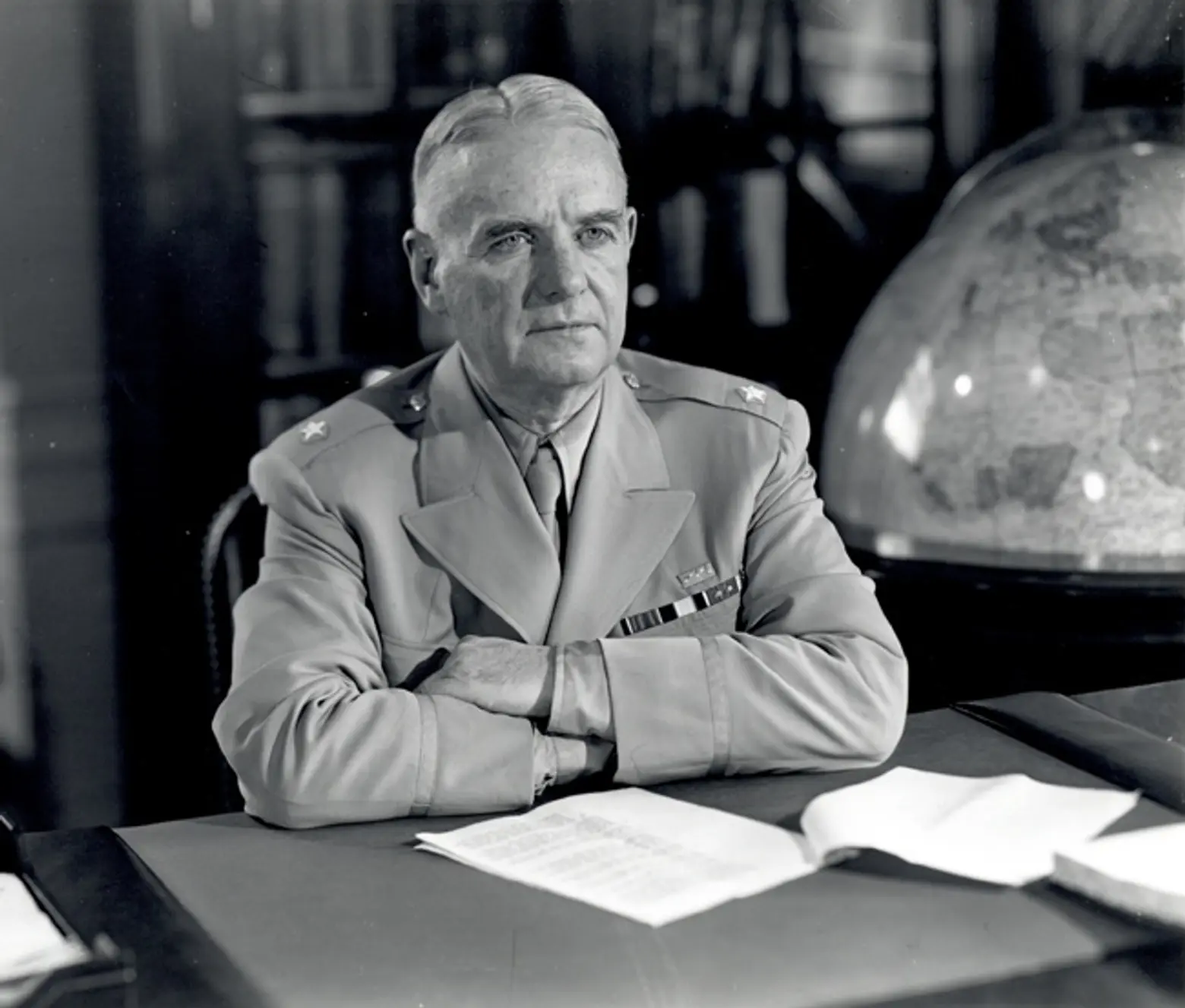 “Wild Bill” Donovan, via Wiki Commons
“Wild Bill” Donovan, via Wiki Commons
Prior to the Second World War, the FBI, Military, and State Department were all involved in intelligence work because the nation had no Central Intelligence Agency. But, World War Two was a larger conflict than any that had come before, and it called for a revolution in American intelligence: The United States would need a consolidated spy service to defeat the Nazi war machine.
For a while it looked like Vincent Astor would lead that service, for he knew the import of the role he had already been granted and was grateful for it. He wrote to Roosevelt April 3, 1941, “From now on, it is up to me. My appreciation of your entrusting to me this very considerable responsibility can be better demonstrated through the results obtained than by writing letters. In the job I shall do my very best.” Those results did not materialize, and Astor was ultimately passed over for William, “Wild Bill” Donovan, the Columbia football star and brilliant lawyer who had returned from service in World War I as the most decorated soldier in the American Expeditionary Force.
Donovan is also the only person in American history to be awarded all four of the nation’s highest decorations, including the Medal of Honor. His role as spy chief began July 11, 1941, when he was appointed Coordinator of Information. On June 13th, 1942 the COI was rebranded as the Office of Strategic Services (OSS) to reflect Donovan’s sense of the strategic importance of intelligence and clandestine operations in modern war.
 The King Cole Bar, via Augie Ray/Flickr
The King Cole Bar, via Augie Ray/Flickr
Even though Astor did not become spy chief, his hotel played host to Donovan and his counterpart at MI6, William Stephenson, Britain’s top man in the Western Hemisphere. Donovan and Stephenson were first introduced to one another at the King Cole Bar and returned for weekly drinks for the duration of the war. On VE Day, the two men even convened at the hotel to celebrate Victory in Europe.
The Allied spy chiefs were able to maintain a standing appointment for cocktails at the St. Regis because their intelligence services were headquartered a stone’s throw down 5th Avenue, on the 36th floor of the International Building, in Rockefeller Center. Praising Stephenson’s role in helping to shape the modern American intelligence community, Donovan later said, “Bill Stephenson taught us all we ever knew about foreign intelligence.” Accordingly, the partnership Donovan and Stephenson forged over drinks at the St. Regis proved not only to be one of the most important alliances of the War, but also one of the defining relationships in the history of modern espionage.
The cloak and dagger set used the St. Regis not only for partnerships but also for partying. The spies met for soirees at the St. Regis because the OSS was as socially connected as Astor’s “Room” had been. Most members of The Room became OSS officers, and a witticism at the time held that OSS stood for “Oh, So Social,” because the agency employed so many society swells. Conveniently, the rarefied ranks of the OSS matched the elegant environs of the St. Regis. To these prominent precincts, Donovan brought a swashbuckling sensibility and reckless derring-do best described by Hollywood director and OSS officer John Ford, who referred to Donovan as “the sort of guy who thought nothing of parachuting into France, blowing up a bridge, pissing in Luftwaffe gas tanks, then dancing on the roof of the St. Regis with a German Spy!”
Fantastically enough, the man who designed that roof also became a spy. Serge Obolensky was an ousted White Russian prince, turned Hotelier, turned OSS officer, who fled the Bolsheviks and married Alice Astor in 1924. After Alice filed for divorce in 1932, Obolensky started working for Vincent Astor to restore the St. Regis. The two men agreed that Obolensky was qualified to be a “general consultant, promotion man and trouble shooter” at the St. Regis because he had lived much of his in the finest hotels in Europe.
Improvements to the hotel’s roof were by no means Obolensky’s only contributions to the property. In fact, it was he who brought Maxfield Parrish’s Old King Cole Mural to its current hallowed home behind the bar, and legend has it that his taste for spice inspired the creation of the Bloody Mary in the same place.
But the heat of cocktails has nothing on the heat of War. Obolensky had been awarded the Cross of St. George for valor three times as a Major in the Russian Cavalry Guard during the First World War, and when conflict erupted in Europe once more, he was keen to go overseas. Too old to enlist in the United States Army, Obolensky approached Donovan while the spy chief was staying at the St. Regis, hoping for a post in the commando unit. Donovan obliged, and 53-year-old Obolensky became the nation’s oldest combat paratrooper, picking up the Bronze Star and the Croix de Guerre for daring midnight jumps into occupied Sardinia, where he landed with a letter from General Eisenhower to Italian commanders on the island and France where he was tasked with protecting the power station serving Paris from the retreating German columns.
Obolensky’s missions were not the only maneuvers planned at the St. Regis. In fact, portions of Operation Torch, the 1942 Allied invasion of North Africa, were hammered out at the hotel. Responsible for the covert ops surrounding the North Africa landing, Donovan gathered his staff at the St. Regis in August 1942 to review the status of those plans. Donovan’s subordinates would not have been surprised to be told to report to the St. Regis because Donovan had already made the hotel official OSS headquarters for six weeks that spring.
On April 1st, Donovan broke his leg in a car crash on his way to Union Station to catch the 1:05 train to New York. He refused treatment and proceeded to Manhattan. Upon arrival, he had himself lifted into a cab and taken directly to the St. Regis. For the next six weeks, his suite became his office, and the hotel commenced running a 24-hour spy service, constantly abuzz with clerks collecting marching orders to relay to Washington, secretaries taking dictation, agents returning from the field with briefings on their operations, and friends from British intelligence keeping London abreast of the unorthodox situation.
One such friendly Brit was Ian Fleming, Naval Intelligence. Fleming was drawing from personal experience when he had James Bond stay at the St. Regis in Live and Let Die, but no fictional spy thriller could match the pulse-quickening true story of espionage at the hotel.
+++
 Lucie Levine is the founder of Archive on Parade, a local tour and event company that aims to take New York’s fascinating history out of the archives and into the streets. She’s a Native New Yorker, and licensed New York City tour guide, with a passion for the city’s social, political and cultural history. She has collaborated with local partners including the New York Public Library, The 92nd Street Y, The Brooklyn Brainery, The Society for the Advancement of Social Studies and Nerd Nite to offer exciting tours, lectures and community events all over town. Follow her on Twitter and Instagram.
Lucie Levine is the founder of Archive on Parade, a local tour and event company that aims to take New York’s fascinating history out of the archives and into the streets. She’s a Native New Yorker, and licensed New York City tour guide, with a passion for the city’s social, political and cultural history. She has collaborated with local partners including the New York Public Library, The 92nd Street Y, The Brooklyn Brainery, The Society for the Advancement of Social Studies and Nerd Nite to offer exciting tours, lectures and community events all over town. Follow her on Twitter and Instagram.
RELATED:
